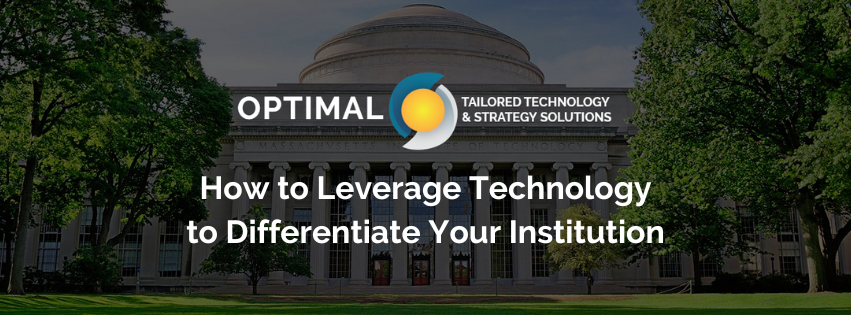 The last three years have inflicted unprecedented costs on American higher education institutions, resulting in campus closures, refunded student fees, and a rapid shift to online learning—all as declining state support continues to undermine budgets. According to a GatherContent study, most universities are still grappling with legacy technologies while consolidating data across multiple silos. These trends have continued to worsen issues that existed in higher ed prior to 2020, turning cracks into chasms and leaving challenged colleges and universities with the daunting task of using technology to help effectively innovate and differentiate their institution’s value proposition.
The last three years have inflicted unprecedented costs on American higher education institutions, resulting in campus closures, refunded student fees, and a rapid shift to online learning—all as declining state support continues to undermine budgets. According to a GatherContent study, most universities are still grappling with legacy technologies while consolidating data across multiple silos. These trends have continued to worsen issues that existed in higher ed prior to 2020, turning cracks into chasms and leaving challenged colleges and universities with the daunting task of using technology to help effectively innovate and differentiate their institution’s value proposition.
Higher ed institutions stand to benefit greatly from the effective use of technology, including but not limited to:
- Improved Competitiveness
- Enhanced Student Experiences
- Creating a Culture of Data-Driven Decision Making
- Optimizing Resources
A description of the first, second, third webinar in the series can be found on our blog. Our fourth webinar in the series is described in more detail below.
Where Do You Start?
To best determine how to effectively use technology to differentiate your institution, first you must start by aligning your project goals with your mission, vision, and value proposition. How is your organization uniquely positioned to make a difference to its students, faculty, staff, and community?
Once you’ve established how your institution could innovate and stand out amongst its peers, it’s vital to track broader trends within higher education and assess how they might apply to your university’s mission. Some of these include tremendous cost pressures on both students and institutions, the value of real world experience, students focusing on skills rather than theory, and just-in-time learning. Keeping a finger on the pulse of innovative learning trends can also assist in anticipating ways to enhance student learning and effectiveness in higher ed IT.
What Not To Do
There are a few easily recognizable pitfalls of varying degrees of severity that may be familiar but nevertheless important obstacles to avoid. The first and most daunting hurdle among them is to avoid a technology-first approach when attempting to innovate with technology in higher ed. A primary goal of true digital transformation is to provide an infrastructure with which the organization can modify their business model to account for a new reality. Having a well-articulated vision and enacting it with the help of innovative technologies is going to have a much greater impact on your institution than an impressive technology package that is out of sync with your mission.
As with most technology projects, change management is an important piece of the puzzle. Having university leadership fully committed to the project and involving stakeholders as often as possible will ensure a more effective decision making, buy-in, and training process in the long run. While changes in institutional culture will be key to success, an iterative approach to implementation will maintain a level of flexibility needed to keep up with evolving trends in higher education.
Tools of the Trade
Although technology alone will not solve your institution’s problems, the use of innovative tools and processes can help boost your chances of success. From artificial intelligence that can help predict the outcome of a project, assessing risk and mitigations as the project gets underway, to tools that facilitate efficient remote working and collaboration, there has been a lot of progress in this area. Taking advantage of these opportunities for optimization can also help buy-in with stakeholders: mobile friendly technology offers users a chance to engage from their most accessible device.
Keeping your institution thriving rather than surviving in the near future is going to take a combination of efficient tools, innovative leadership, and a campus community willing and ready to engage in upcoming changes. By focusing on your university’s value proposition, analyzing the potential of new programs, and savings millions of dollars through improved efficiency Optimal Campus can help you achieve your school’s goals and stand out among peer institutions.
Visit our website to learn more about Optimal Campus’ professional service offerings.
Avoid costly mistakes and wasted time – talk to an impartial peer in Higher Ed!
There is nothing like speaking with a peer who has implemented the same product – send us a request.
You can also provide general feedback, inquire about additional free resources, submit a topic you’d like us to cover, tell us about a feature you’d like to see, or request the best staff for your project.